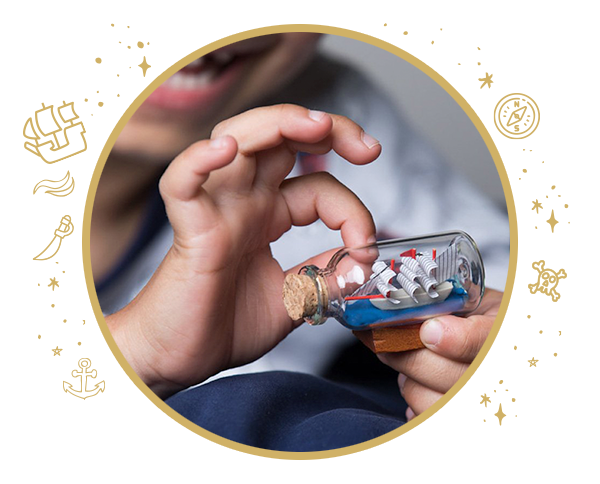We’re all born with magic inside of us. Some call it imagination. Some call it a sense of wonder. But all of us can tap into it. The beautiful thing about raising a small child is remembering what magic looks like, what it feels like, and how it can appear in an instant. The light on water. The sound of trees in the breeze. A single flower blooming in October.
But what is magic? And how do we cultivate it in our children? Garry Gilfoy, an author, therapist, and lecturer writes about how magic “illuminates people from the inside” in "Where Has All the Magic Gone" Unlike adults, children are able to access magic instinctively. They’re not limited to their bodies. They radiate out and “live in their whole environment.”
As grown-ups, the most important thing we can do is help young children hold on to the magic inside. It’s easy. Here’s some suggestions from Gilfoy.
1. Allow questions. Let them seek out their own answers.
Yes, those endless “whys” can be annoying. But discovery is key to teaching your child how to navigate the world with fun and joy.
2. Give them free reign to imagination and play.
Unstructured time is key. Give a child plenty of time to follow his or her whimsy. They’ll understand how to entertain themselves instead of expecting entertainment to be served to them.
3. Get out into nature.
Not all of us can live in small towns. If you live in a city, travel to quiet places. Hikes in the forest, an afternoon picnic in a meadow, sitting by a river for hours. Find nature wherever it is.
4. Let them find their own sacred places.
Your sacred place may be different than your child’s. Letting him or her wander until they find a spot to rest and dream is a gift that can never be taken away.
5. Stand back and let go.
It’s natural to want to protect children and keep them out of harm’s way. But a child must test his or her limits to find a sense of harmony and balance. Resist the desire to bubble wrap their spirit.
Creativity creates magic. Find plenty of space for your child to roam, to wander, and to wonder. Let go of your schedule. The calendar can wait. More than lessons and play-dates, children need room for daydreaming, exploring, and inventing.
As Gilfoy points out, “We don’t need to give children Lego blocks or a plastic playground.” We only need to set them free.
Magic is real. All you need to do is look for it.



















